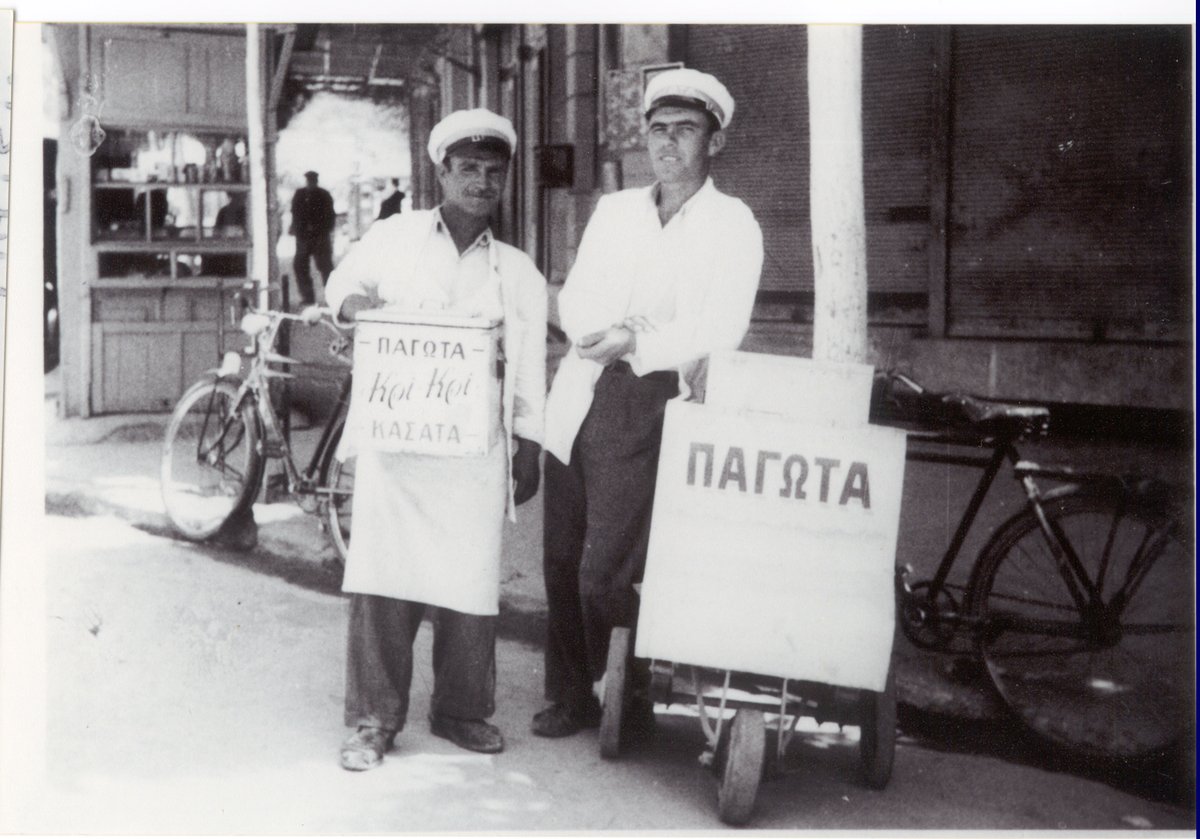
Everyone loves ice cream, especially on hot summer days. So what is the history of ice cream, the perfect summertime treat, in Greece? How did it find its way to becoming a central part of Greek summertime culture?
The three major ice cream makers in Greece are Evga, which was bought out by Unilever; Delta, which has been bought by Nestle; and Kri Kri, the only purely Greek company with headquarters in Serres, Greece.
Long ago, however, there were other Greek ice cream companies, such as Agno Dairy SA, which started operations in 1950 in Thessaloniki as the first industry pasteurization and milk bottling company in northern Greece.
In the late 1990s, Pure became a pioneer company in ice cream with a modern factory boasting the latest technology and equipment.
However, by 2003, the company had acquired too much debt and the Agricultural Bank of Greece stepped in and took over the company, transferring Pure to Kolios SA.
Now that you have some perspective on the rise and fall of the ice cream empires in Greece, let’s take at look at the history and aspects of those still standing that have helped keep them in business over the decades.
Ice cream companies revolutionized dairy industry in Greece
Evga started the craze of ice cream on a stick in Greece in 1936, as they were the very first to make the delicious treat in that form in the country.
Generations upon generations of Greeks remember Evga while they were growing up, as it is the company that changed ice cream altogether after being established in 1934 by the Souraka brothers, who were Greek-American immigrants to Athens.
By producing pasteurized cow’s milk, the brothers sparked the beginning of the dairy industry’s industrialization in Greece.
The streets quickly flooded with ice cream lovers, as in 1936 there were no refrigerated ice cream trucks cruising the streets. When the vendors passed out the frozen treat, they had to be sharp about it before the precious ice cream melted.
Back then, street vendors only had wheelbarrows filled with ice. Thus, the profession of “pagotatzi” came about with ice cream vendors wearing a white apron and cap when traveling through the neighborhoods with their famous three-wheeled carts.
Of course, as modern technology advanced, ice cream has ended up in your supermarket freezer section or loaded into musical ice cream trucks. The charm of the wooden carts, however, has unfortunately been lost in that process.
Other brands enter the market
The dairy dynasty of the Daskalopoulos family, who created the dairy company Delta in 1890 from a small dairy workshop in Exarchia, Athens, was late to join the ice cream craze.
By the time they decided to enter the market in 1967, Evga was quite dominant in the ice cream industry, but that didn’t stop Delta.
In fact, by 1979, Delta had acquired an impressive position in the category of fresh milk in Greece and one year later, in 1980, it became the leader in the ice cream market in Greece.
Between 1996 and 2000, Delta carried out renovations and expansions of its ice cream factories, and in 2006, it sold 96.53 percent of the total shares in Delta Ice Cream to Nestle.
Kri Kri, the one remaining Greek ice cream company that is controlled by Greeks, saw its first sales in 1954 under the guidance of founder George Tsinavo when the company decided to undertake the simultaneous production and distribution of ice cream and confectionery in the city of Serres.
The first ice cream distributions made by vendors used special chests made of wood and metal, weighing about thirty pounds each, while the capacity was about forty pieces of ice cream per chest.
The very first ice cream created by Kri Kri was “Cassata,” a special cream based on sheep’s milk that was rich in flavor.
By the 1960s, Kri Kri put its first modern-day ice cream freezer on the market in Serres.
By 1971, the ice cream product had become well-known outside of Serres, as well.
In 1987, George’s son, Panagiotis Tsinavos, expanded the factory and facilities of Kri Kri and that same year, the company’s ice cream product line became available all over Greece.
Today, it remains the only Greek-owned ice cream company and exports ice cream to twenty-two countries.
Ice cream has been popular in Greece for centuries
How long have the Greeks had a love affair with ice cream? How about since at least one hundred years before Alexander the Great?
In fact, ancient Greeks were attracted to “ices” as early as the fifth century BC.
In those years, ices were actually honey and fruit-flavored snow, and they were wildly popular among Greeks in Athens’ central market, spreading quickly throughout the Aegean world.
Alexander the Great, born in 356 BC, reportedly ate his share of ices while growing up as the son of the king of Macedon, Philip II. According to legends which have survived to this day, his favorite ice was flavored with honey and nectar.
See all the latest news from Greece and the world at Greekreporter.com. Contact our newsroom to report an update or send your story, photos and videos. Follow GR on Google News and subscribe here to our daily email!



